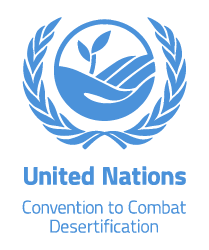Location
The United Nations Convention to Combat Desertification in Those Countries Experiencing Serious Drought and/or Desertification, Particularly in Africa (UNCCD) is a Convention to combat desertification and mitigate the effects of drought through national action programs that incorporate long-term strategies supported by international cooperation and partnership arrangements.
Members:
Resources
Displaying 56 - 60 of 585Farmers working together to restore their degraded land and diversity production. Included in Restoring African Drylands
As a farmer in northern Kenya, I came to understand the importance of dryland restoration. After moving to Kaijaido country in the south, I started an initiative to restore the land, increase food security and reduce poverty, supported by a grant from the East African Community with various activities supported by FAO and Yale University.
Regreening the Sahel: A quiet agroecological evolution
‘Over the past three decades hundreds of thousands of farmers in Burkina Faso and Niger, on the fringes of the Sahara Desert, have transformed large swathes of the region’s arid landscape into productive agricultural land, improving food security for about three million people. Once-denuded landscapes are now home to abundant trees, crops, and livestock.'
“Global Safety Net” to reverse biodiversity loss and stabilize Earth’s climate
Global strategies to halt the dual crises of biodiversity loss and climate change are often formulated separately, even though they are interdependent and risk failure if pursued in isolation. The Global Safety Net maps how expanded nature conservation addresses both overarching threats. We identify 50% of the terrestrial realm that, if conserved, would reverse further biodiversity loss, prevent CO2 emissions from land conversion, and enhance natural carbon removal.
Adoption of farmer managed natural regeneration in Senegal. Included in Restoring African Drylands
Valuable lessons can be learned from smallholder farmers who have successfully protected and regenerated tree cover across agricultural landscapes in Senegal, with minimal reliance on tree nurseries, seedling distribution or tree planting. In the process, they have restored soil fertility to sustainably increase agricultural production.
Successful landscape restoration in Abreha We Atsbeha watershed, Tigray, Ethiopia. Included in Restoring African Drylands
Key success factors
There were several reasons for the success of the restoration initiative.
• Implementation had the active participation of the local community; i.e., it was community- led restoration.
• Restoration produced short- and long-term economic and environmental benefits.
• It systematically included women, girls and youth in restoration activities.
• The former village leader had the leadership capacity to mobilize the local community.


